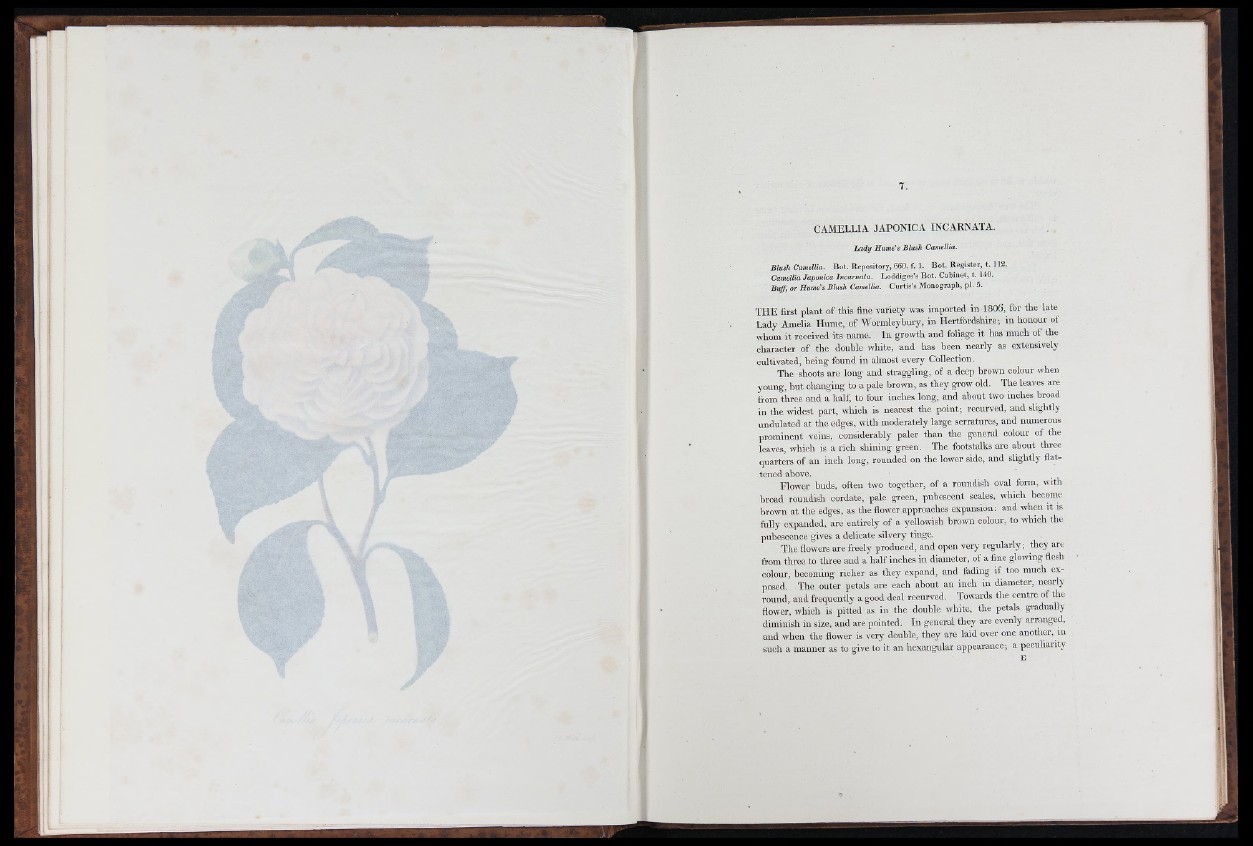
7.
CAMELLIA JAPONICA INCARNATA.
L a d y H um e s B lu sh Camellia.
B lu sh Camellia. B o t. R e p o s ito ry , 660. f. 1. B o t. R e g is te r , t . 112.
Camellia J a pónica In c am a ta . L o d d ig e s ’s B o t. C a b in e t, t . 140.
B u ff, or H um e 's B lu sh Camellia. C u r tis ’s M o n o g ra p h , p i. 5.
TH E first plan t of this fine variety was imported in 1806, for the late
Lady Amelia Hume, of Wormleybury, in Hertfordshire; in honour of
whom it received its name. I n growth and foliage it has much of the
character of the douhle white, and has been nearly as extensively
cultivated, being found in almost every Collection.
The shoots are long and straggling, of a deep brown colour when
young, b u t changing to a pale brown, as they grow old. The leaves are
from three and a half, to four inches long, and about two inches broad
in th e widest part, which is nearest the point; recurved, and slightly
undulated a t the edges, with moderately large serratures. and numerous
prominent veins, considerably paler th an the general colour of the
leaves, which is a rich shining green. The footstalks are about three
quarters of an inch long, rounded on the lower side, and slightly flattened
above.
Flower buds, often two together, of a roundish oval form, with
broad roundish cordate, pale green, pubescent scales, which become
brown a t the edges, as the flower approaches expansion; and when it is
fully expanded, are entirely of a yellowish brown colour, to which the
pubescence gives a delicate silvery tinge.
The flowers are freely produced, and open very regularly; they are
from three to three and a half inches in diameter, of a fine glowing flesh
colour, becoming richer as they expand, and fading if too much exposed.
The outer petals ai-e each about an inch in diameter, nearly
round, and frequently a good deal recurved. Towards the centre of the
flower, which is pitted as in the double white, the petals gi-adually
diminish in size, and are pointed. In general they are evenly arranged,
and when the flower is very double, they are laid over one another, m
such a manner as to give to it an hexangular appearance; a peculiarity
E